At Urban Systems, vibrant communities – including the ones people foster at work – are everything. Founded in 1975, they’ve designed and built transportation networks, green spaces, water systems, clean energy sources and more. Their work and areas of practice are constantly evolving – because communities of all shapes and sizes are constantly evolving too.
In 2022, they recognized that their intranet wasn’t supporting their workplace evolution. It lacked the functionality they needed to tell the right stories for their audiences and support engagement among employees, and it didn’t represent who they are and what they stand for.
A vision for Urby
The Urban family also includes Urban Matters, a community contribution corporation that focuses on social planning and community development, and the Urban Systems Foundation, a registered charity.
“Urban is a networked organization,” says Katie Miller, communications specialist at Urban Systems. “We emphasize personal connection and strongly believe that everyone is a part of stewarding our business.”
When considering an intranet redesign, Katie and her team wanted to build an intranet that would serve as a welcoming place to all employees at Urban, no matter which Urban team they were a part of.
“We didn’t want our new intranet to feel like a rigid, one-way corporate communication channel, pushing out information to employees,” says Katie. “Instead, we saw it as a town square, where every ‘business’ in that town square serves a purpose. Our goal was to create an open and collaborative space where employees could go to find everything they need, without losing the elements of conversation and connection.”
“The team at Urban had a strong vision for their intranet,” says GO Product Designer Hanah Lim. “It’s a unique, vibrant and engaging intranet that was incredibly fun to work on.”
Comparing GO Intranet vs SharePoint out-of-the-box
Like many organizations considering a new intranet, Urban assessed SharePoint out of the box (OOTB) against GO Intranet to determine which option would solve employees’ challenges and create the experience people needed.
In comparing the two options, they learned that SharePoint is a versatile platform that can be used for many purposes, including an intranet, while GO is a set of features that live on top of SharePoint and are intentionally designed for intranets. SharePoint OOTB offered solid functionality that could have resulted in an acceptable intranet experience for Urban; however, out of the box, it didn’t have the functionality they needed to bring their intranet vision to life.
In addition to the product’s features, they assessed the level of support they would need moving forward – not just to maintain the intranet but evolve it in step with Microsoft 365. They liked the analytics review cycles offered with GO, the support model and the fact that the GO team works to make sure that the product is evolving and constantly delivering value to the business.
Partnering with Habanero
When it came to choosing a vendor, Urban was searching for a partner with the right combination of expertise and flexibility.
“Rebuilding our intranet from scratch was a very daunting task,” says Katie. “It was great to have a team who was very experienced at building intranets and understood best practices, as well as the possibilities and directions that we could take.”
They also wanted to approach the project in a way that aligned with their culture and ways of working.
Features that enhance and extend modern SharePoint
GO Intranet was built to enhance and extend modern SharePoint’s intranet capabilities. Here are some of the ways Urban leveraged GO’s capabilities to achieve more than is possible with SharePoint OOTB and bring their vision for Urby to life.
A friendly welcome
One of the first features employees encounter with Urby is the welcome web part in GO, which can display text, images and video, all neatly contained within a modal-like slideshow. This interactive tool takes new users on a tour of the site and guides them to select their preferences.
Urban wanted to take it up a level by including videos from the team behind the build. To support their culture of connectivity, they don’t use stock images or videos. Any opportunity to show their people is a considered an asset.
As Katie explains, “When we were configuring our welcome modal, we wanted to include a video of people within Urban to show that this platform was made by us, for us. Seeing that there’s a team of our own people who built Urby helps increase the sense of ownership we feel.”
News by and for everyone
In many organizations, news content is generated and published by a defined group of content authors, like a communications team. Urban’s workplace culture values freedom and collaboration. They hold each other with a high degree of trust. So, when they were configuring Urby, they wanted to make it possible for anyone in the organization to create and share news stories.
The Hab team built a “submit a story” function that takes employees to a news listing page where they can add and publish their own news articles.
“This wasn’t something we’d ever done before,” says Hanah. “It was interesting for us to consider news from a collective model, recognizing that content could be generated from anyone in the organization, not just communicators.”
“Culturally, it has been important for us to ensure Urby is a space for everyone,” says Katie. “We want all employees to have the opportunity to share what's going on in their practice or what their branch has been working on.”
The authoring experience in GO has made it easy for all employees to create impactful content.
“The difference in content authoring between modern SharePoint with GO and our previous intranet is night and day,” says Katie. “It’s much more intuitive. There was a bit of an initial learning curve, but it has been user friendly for most of the different employee groups that we've been working with. Everyone feels confident in their ability to add content, share stories and maintain resources.”
So far, their approach to news on Urby has paid off, as more employees are reading and engaging with the news. In the months following the site’s launch, 85% of employees accessed a news article at least once.
Making conversation easy
Katie and her team were excited to leverage the functionality and features in GO that enable more conversation and discussion.
Their previous intranet had a discussion feed, but it wasn’t an intuitive process and not everyone felt comfortable posting. During the pandemic, they started relying heavily on Microsoft Teams for connection. People shared photos with each other and within their teams, but not on a company-wide scale.
Urby features a photo gallery to showcase employee photos prominently on the home page. Using GO’s user-submitted photo web part, employees can upload their own photos or comment on their co-workers’ pics.
“It’s one of the most well-used web parts for submitting content by people outside of our intranet team,” says Katie. “People love that it lets us see the faces of our people doing what they love. It creates more opportunity for us to connect and engage on a personal level.”
Employees have embraced social engagement features across the whole site. A third of them have liked content on Urby, including pages, news and other people’s comments. Twenty percent of users have left a comment, an average of 2.44 per person. The areas of the site that draw the most comments are Recognition, Featured News and What’s Happening, a web part that pulls in additional stories from channels across the digital workplace.
Practical tools accessible from every page
Another feature that made GO stand out for Urban is the Springboard, a persistent toolbar that connects the SharePoint modern workplace with priority access to the tools employees need every day. Within the Springboard, organizations can configure a selection of tools for employees. Common options include My Apps, Quick Links and the People Finder. Since launch, 90% of Urby users have interacted with the Springboard, with apps garnering 60% of clicks.
With GO, organizations also have the flexibility to customize the Springboard tabs to meet their unique needs. For Urban, the team added a careers feed that integrates with Greenhouse, their recruiting and onboarding system, to pull in all company-wide job openings.
“We wanted to give people more visibility into the job openings that are available across the organization, so they have the opportunity to grow their careers at Urban,” says Katie.
With around 700 people and 18 branches, it can be hard to keep track of what's going on within the company. To increase visibility into projects and create opportunities for connection and collaboration, the Springboard also includes a new projects feed, which integrates with Deltek, their reporting and payroll system. Whenever a new client project is opened, employees receive a notification that shows the project name and lead, so people know who to reach out to if they want to ask a question, exchange ideas or offer assistance.
“To create the New Projects tab for Urby, we duplicated and repurposed GO’s Announcements webpart,” Hanah explains. “This webpart is simple to configure and can be used in many ways, depending on an organization’s needs.”
Streamlining brand asset management
Urban’s branded templates, logos and guidelines were previously stored on an internal drive on the network, so employees had to either be in the office or connect to a VPN to access them. To make these files more accessible, they moved them to Brandmate, a brand portal that lives within their GO Intranet. Now, all employees can download and use essential, everyday company assets wherever they work.
In addition to Brandmate, the graphic design team at Urban has uses Open Asset platform to access a wider range of media, more specific to their needs. To bridge the two systems, they cross-linked to Open Asset within Brandmate in a way that provides all employees with a seamless experience.
A living intranet
The launch of Urby is only the beginning. The team is continuously working on improving the site, adding new sections, pages or features according to their employees’ needs. GO’s content lifecycle webpart is helping them stay on track. The feature allows content authors to set review dates for content pages, so they don’t have to manually monitor and review stale content. At least one month before the review date, they receive an email listing all their pages in need of review in the next 30 days.
Choosing GO over SharePoint OOTB means they also have support from Habanero along Urby’s journey.
Intranet usage continues to climb since Urby’s launch. After six months, users rose by 8%, views by 21% and sessions by 17%. Engaged sessions increased by 18% with people spending 9% more time interacting with the site. Now, on an average weekday, 48% of Urban employees access the intranet.
“It’s a starkly different experience from our previous intranet, and we’re excited about the different things that we can work with and play with to make this a good experience to help our people,” says Katie. “At the end of the day, our intranet team’s central focus is to help our people do their jobs well. The more that we can do that the better.”


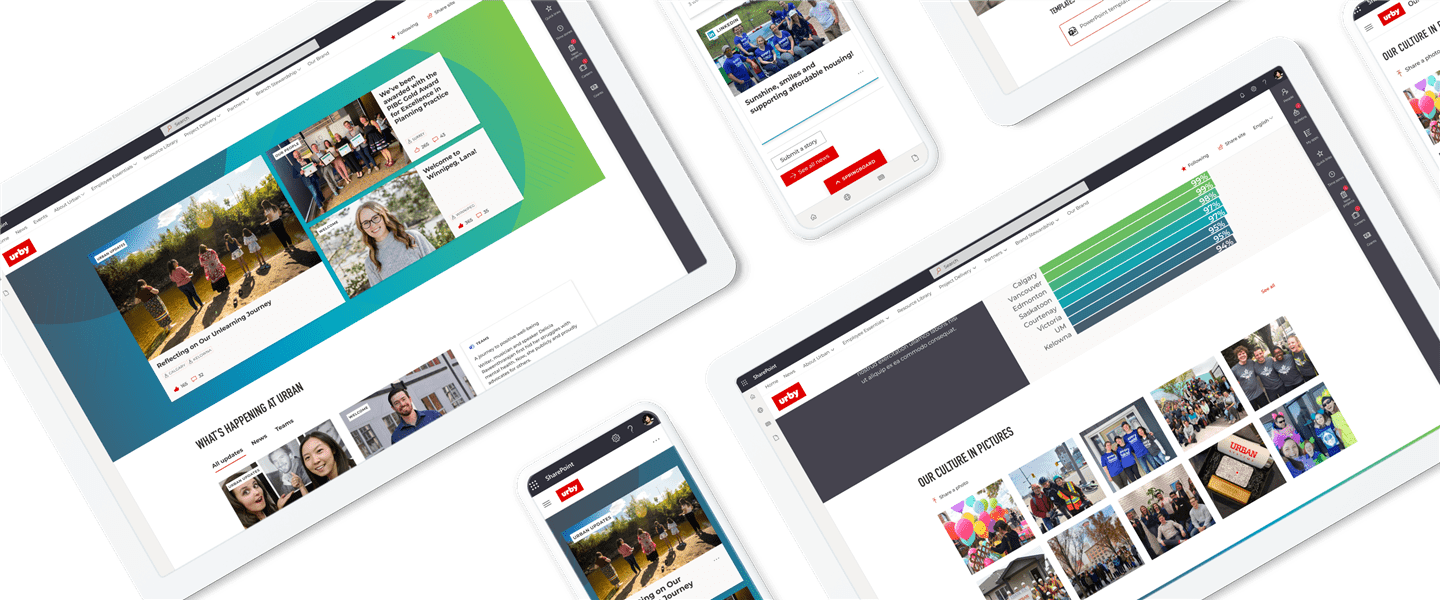

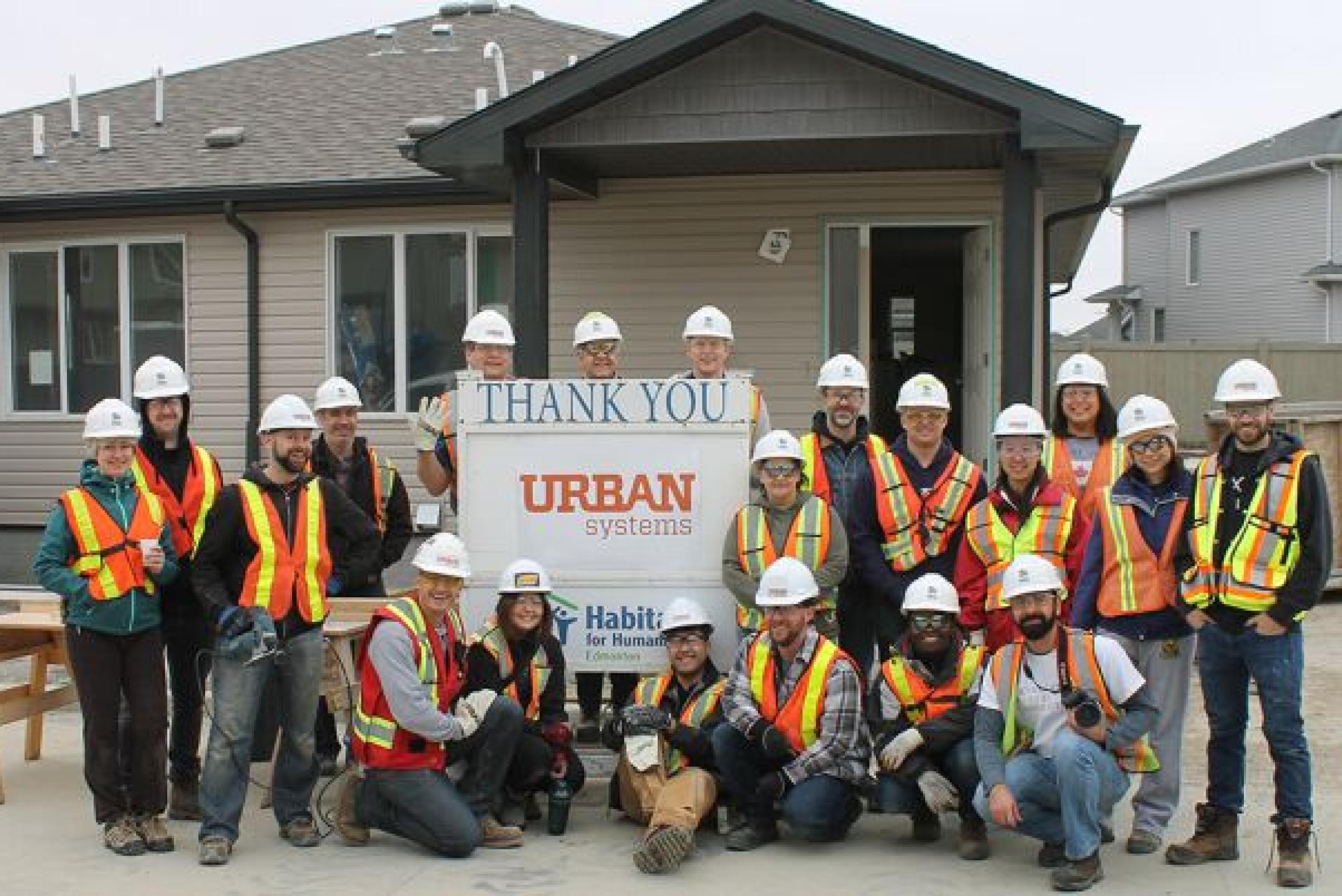

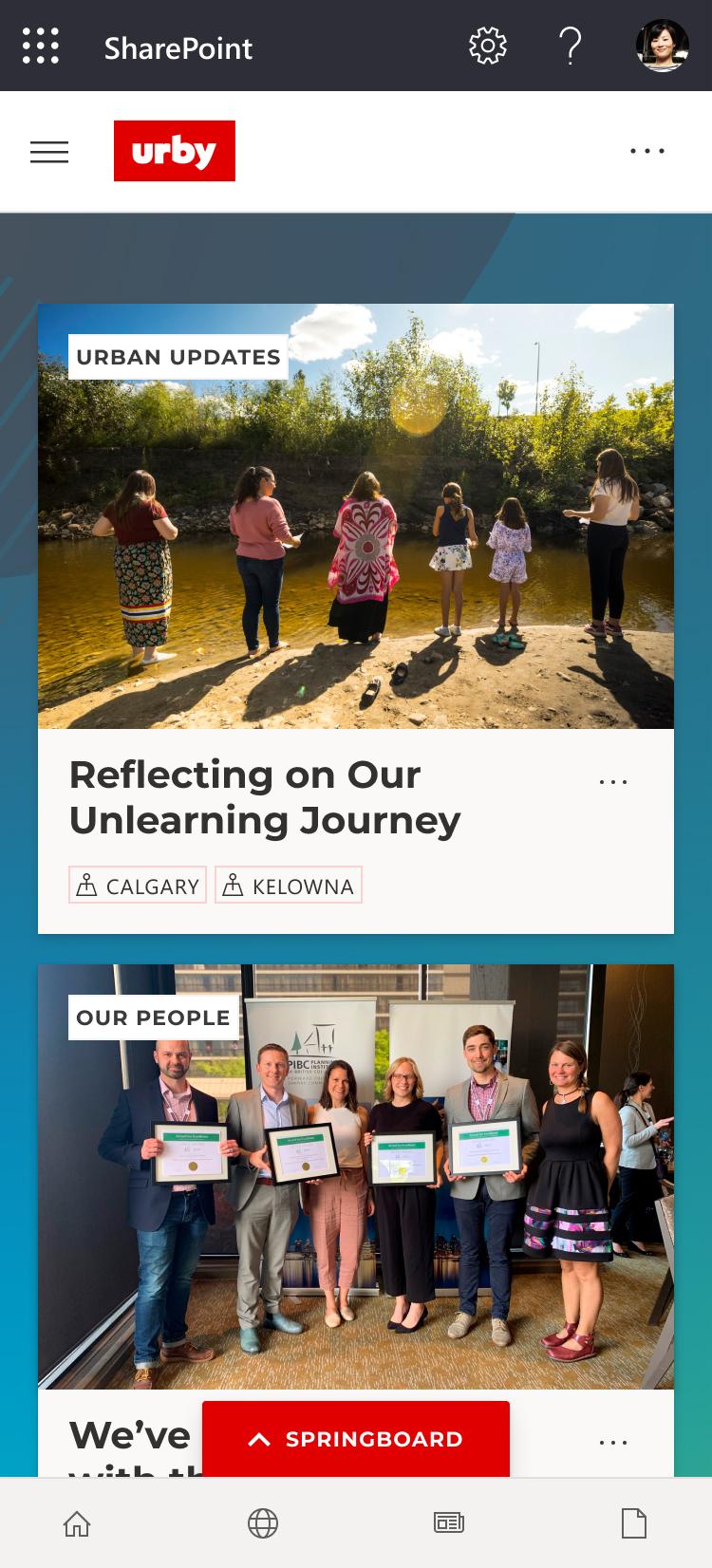
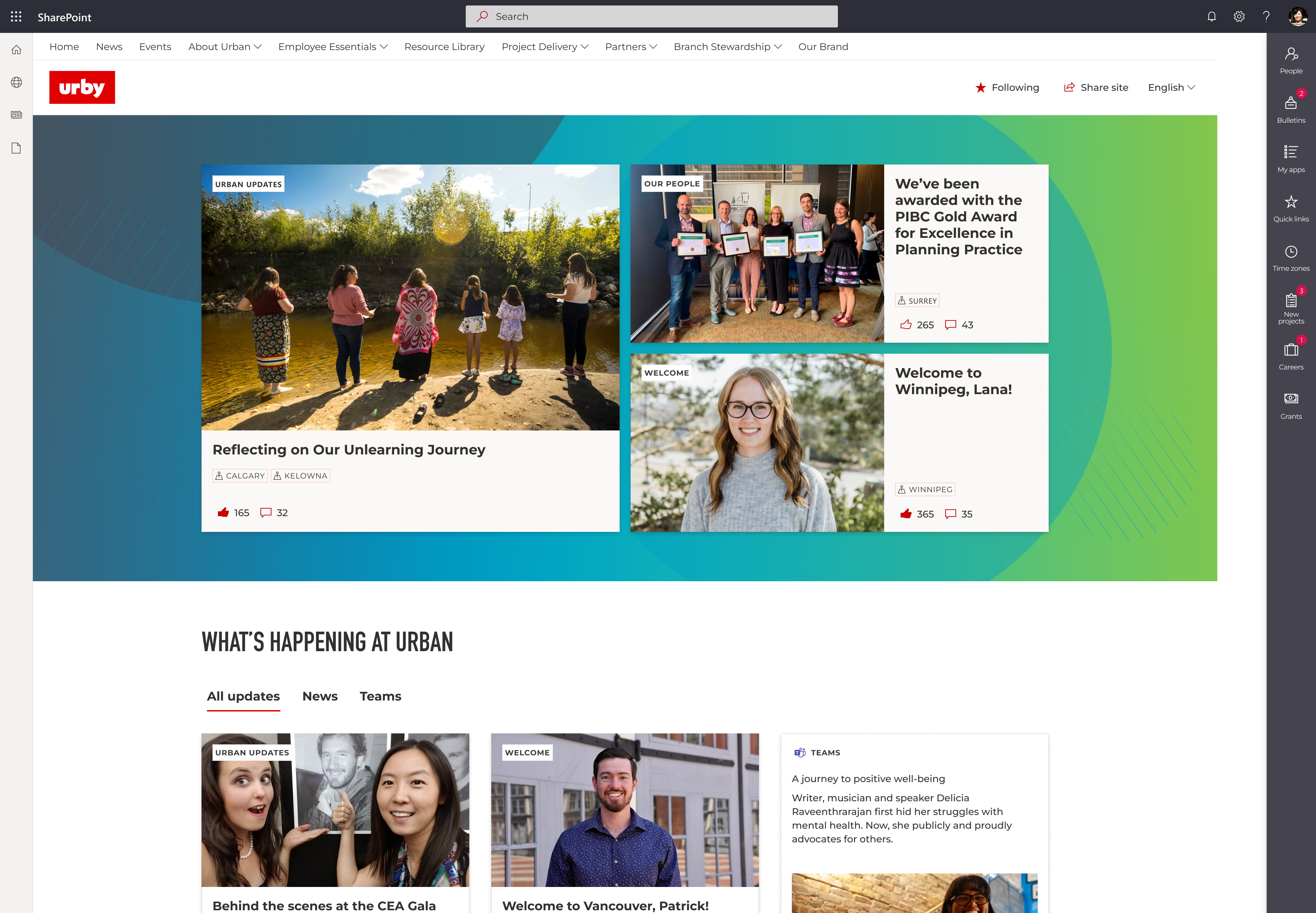
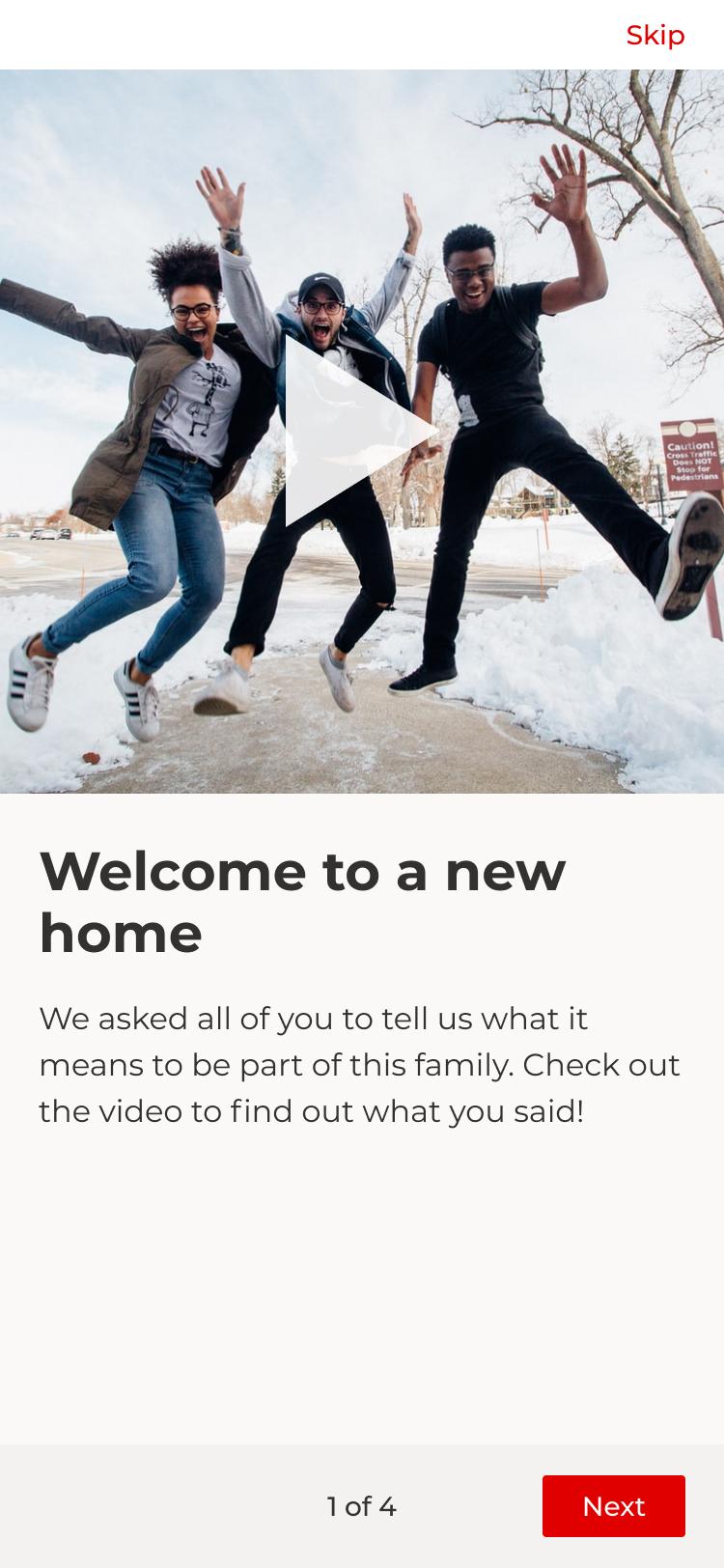
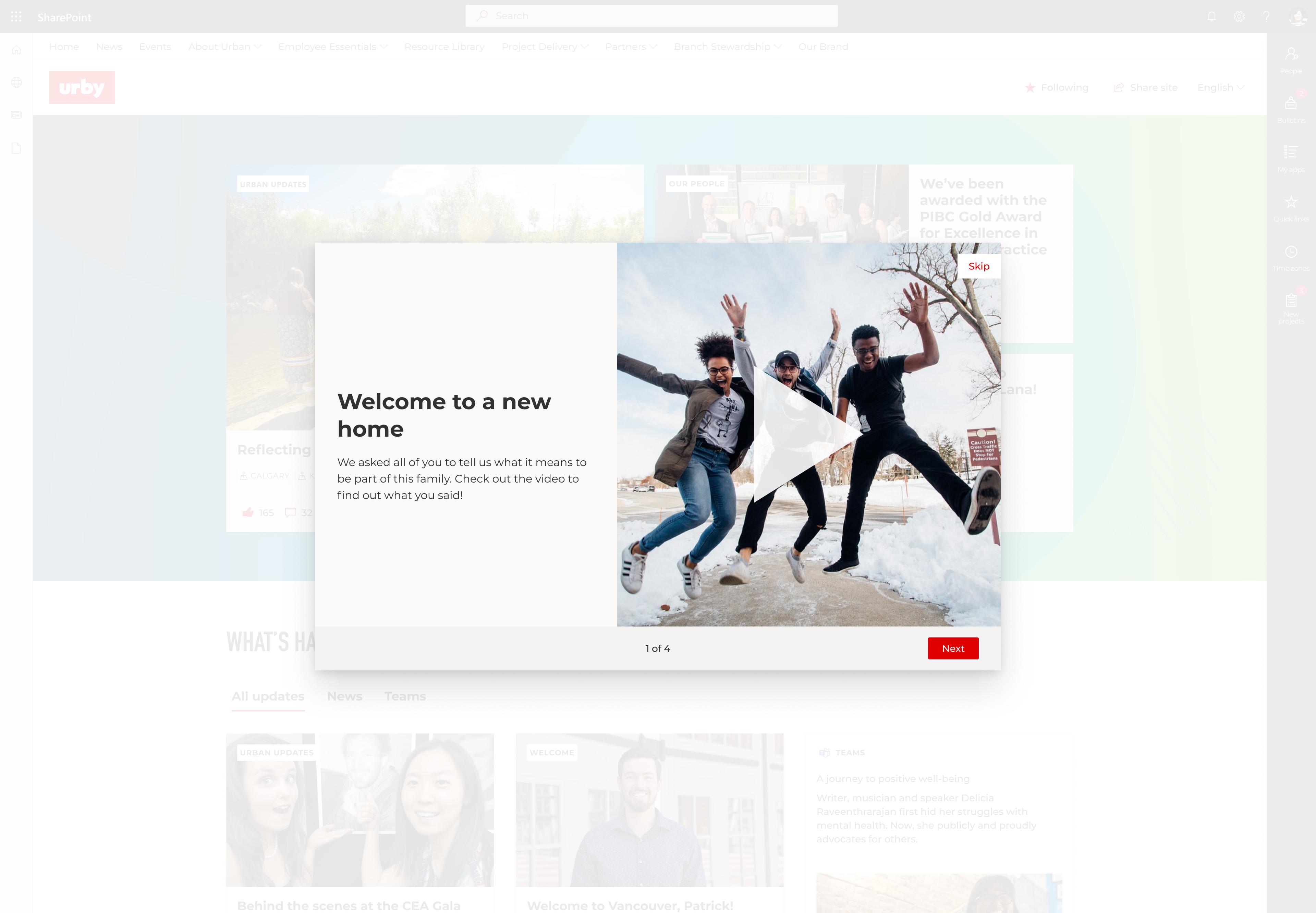
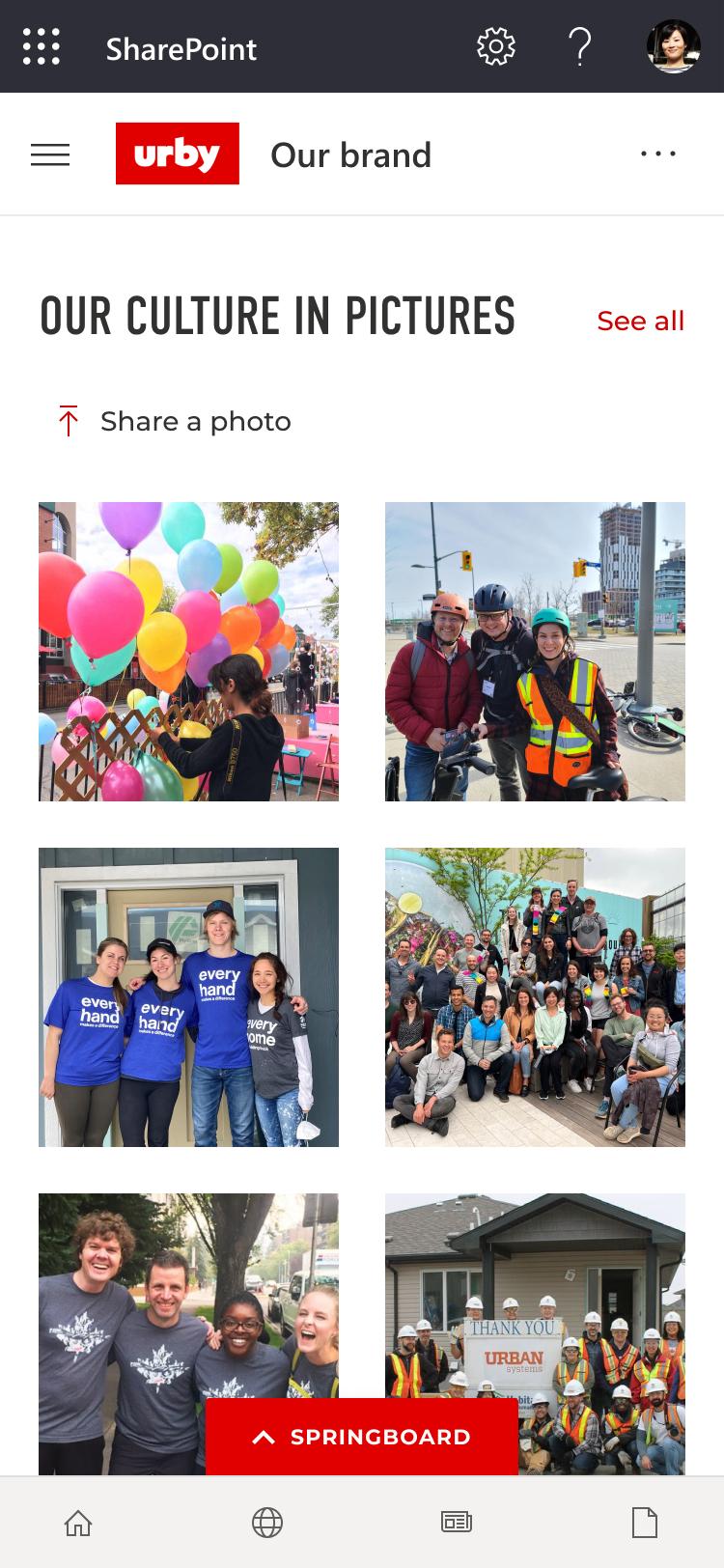
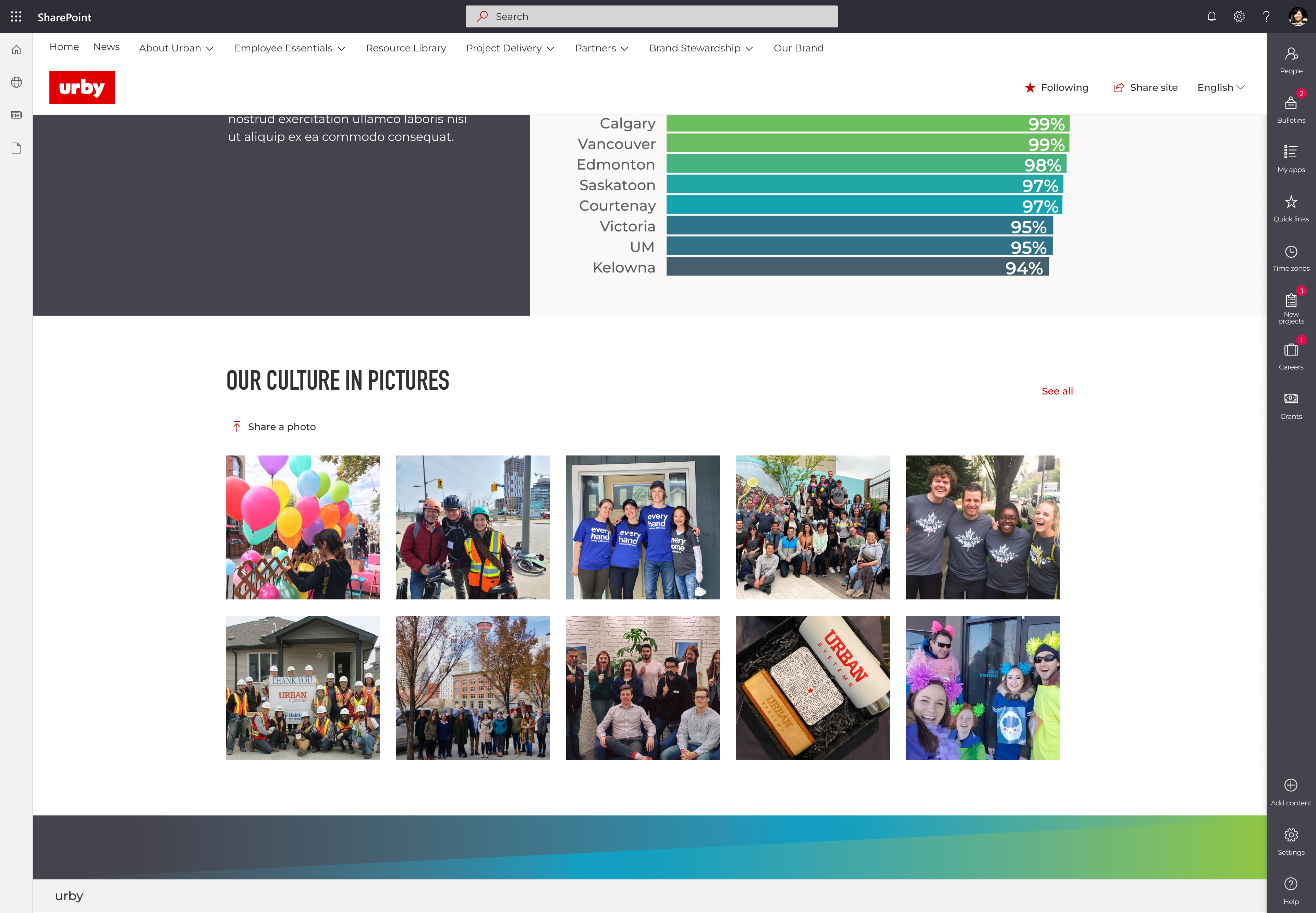
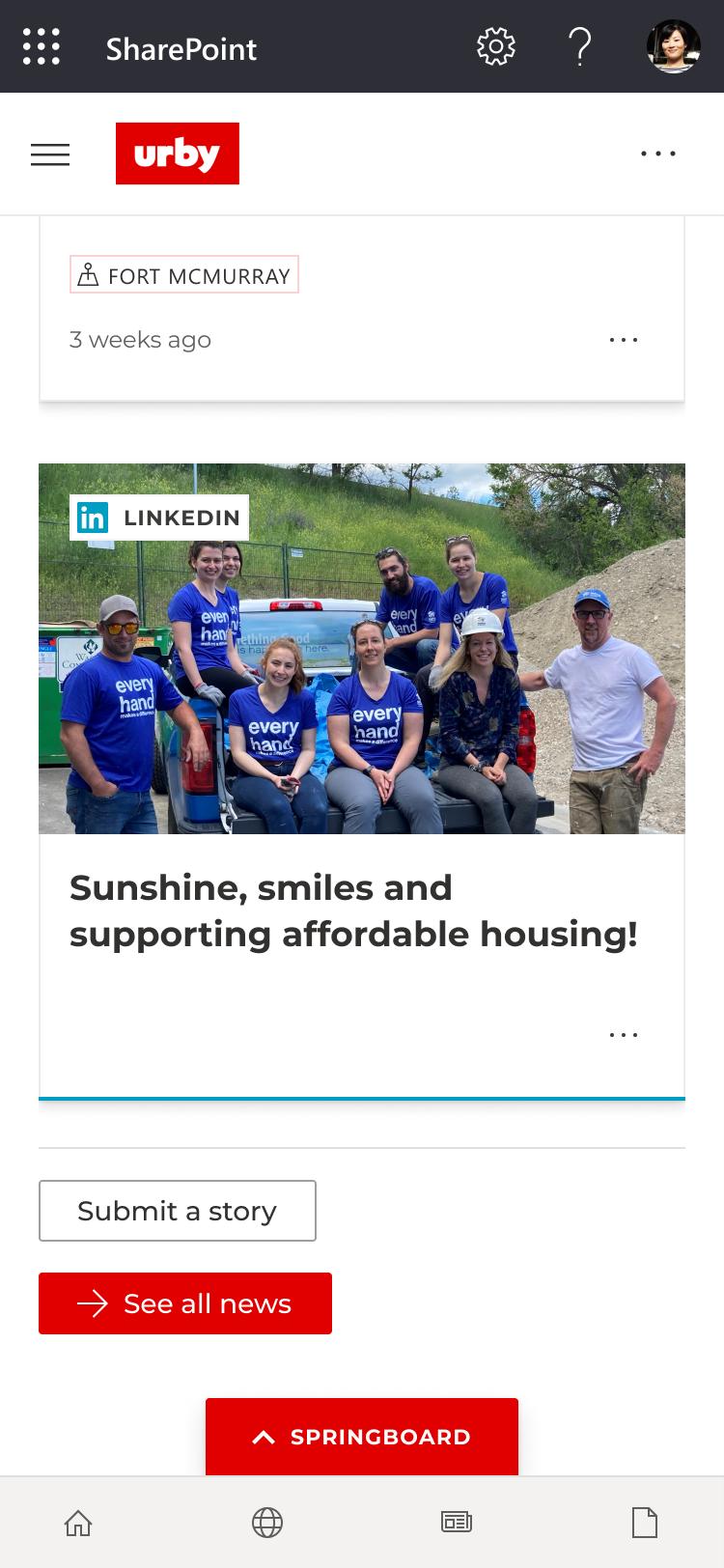
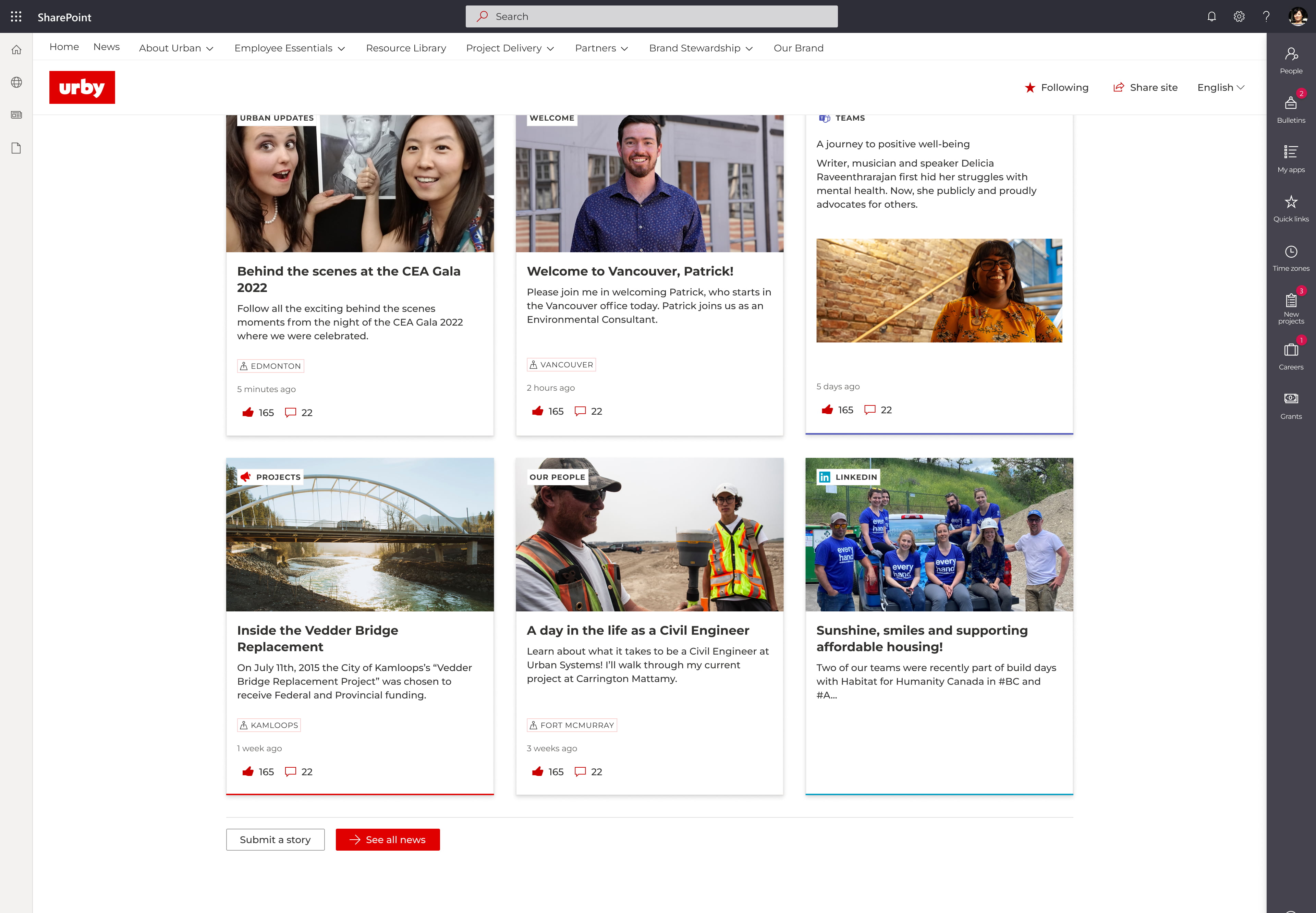
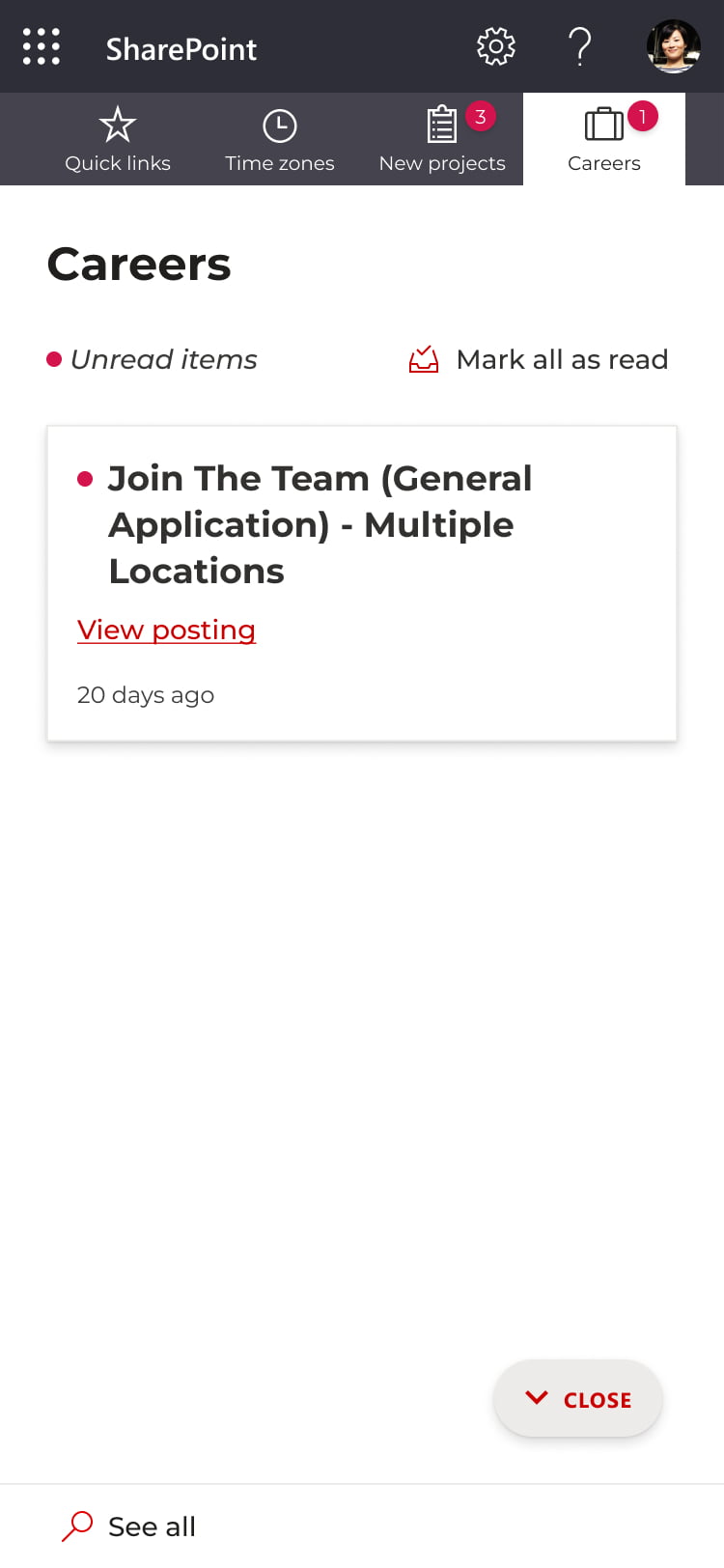
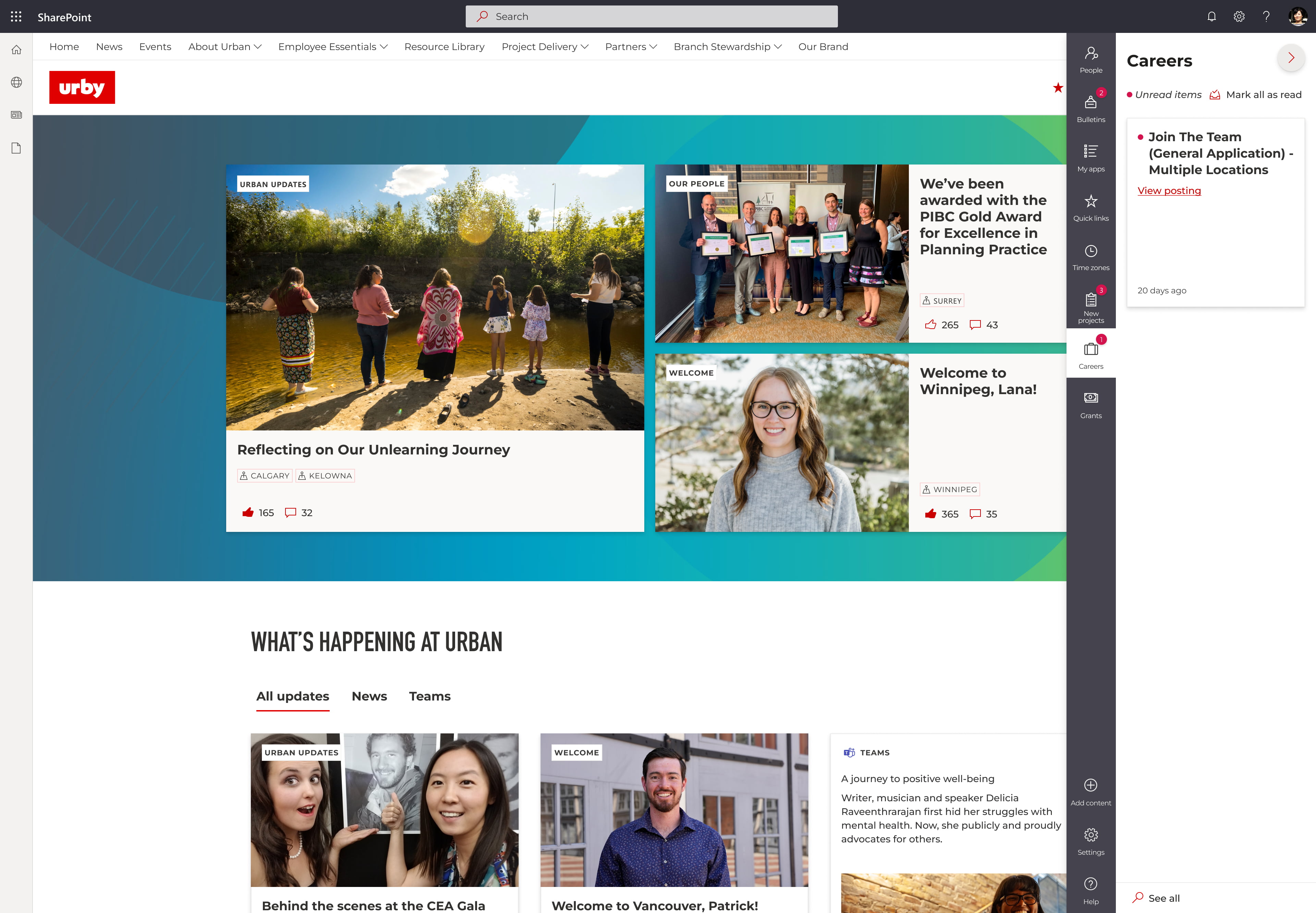
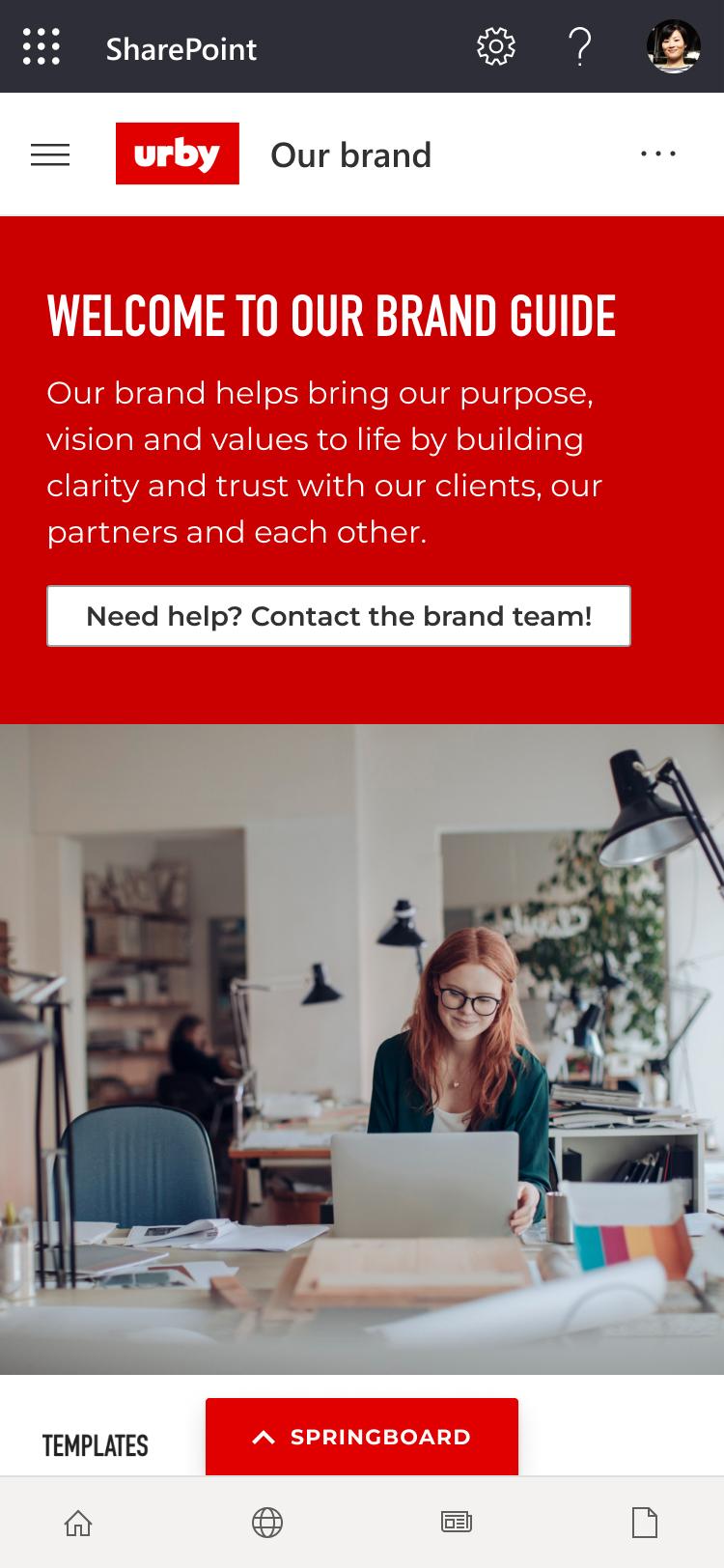
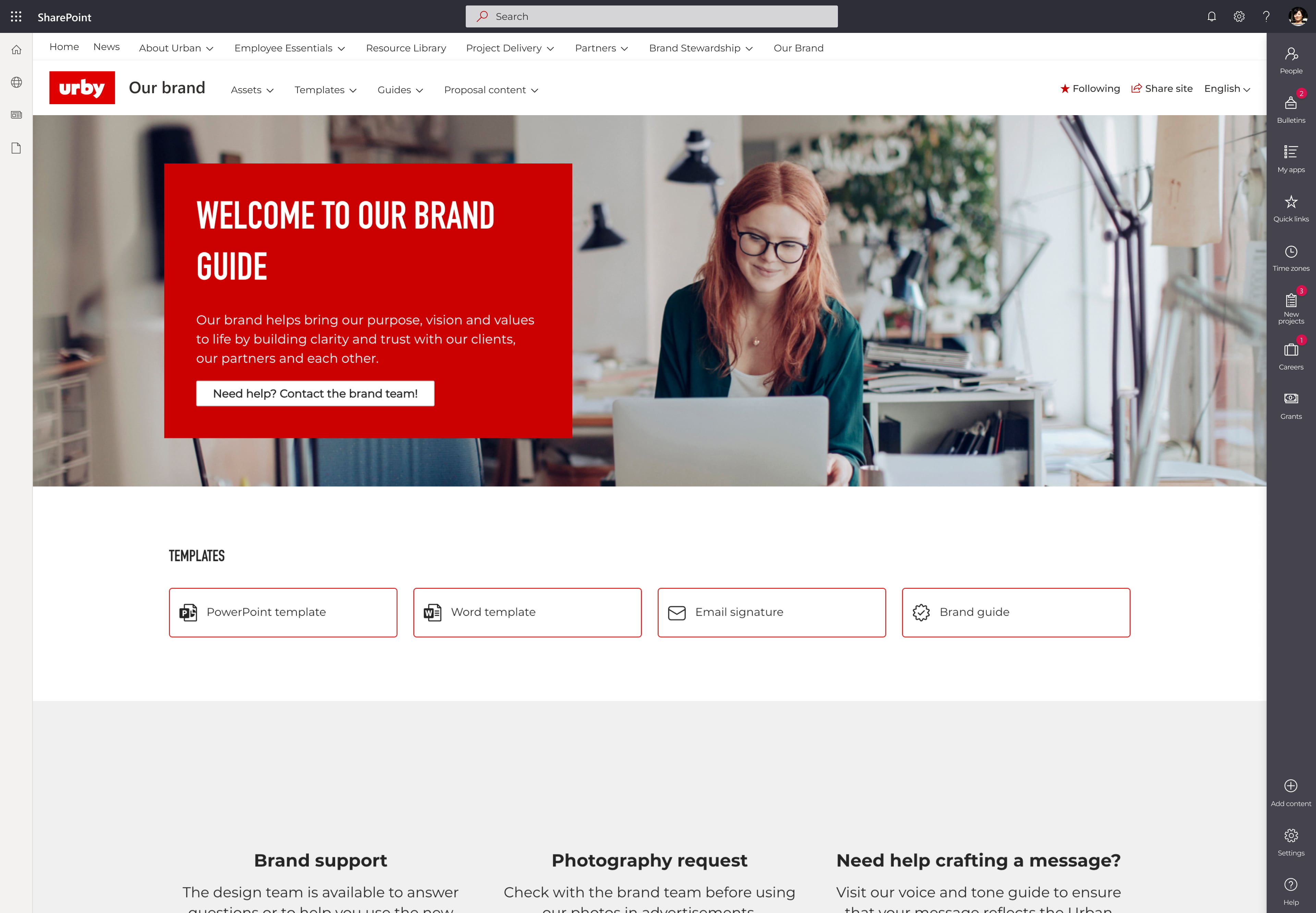

.jpeg?bc=white&la=en&mw=416&modified=20251202191043&hash=E64AA9DFFAE8D1AC27890831F714D5B0FA2FEBB2)

